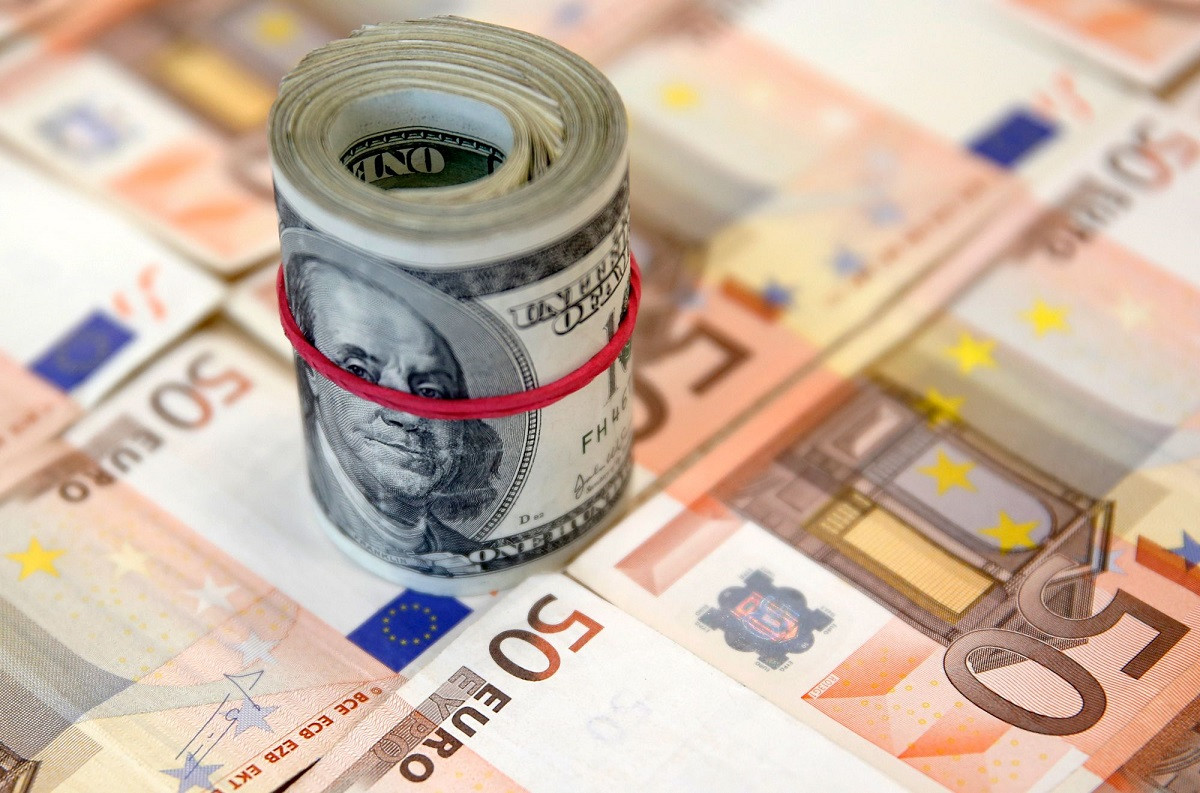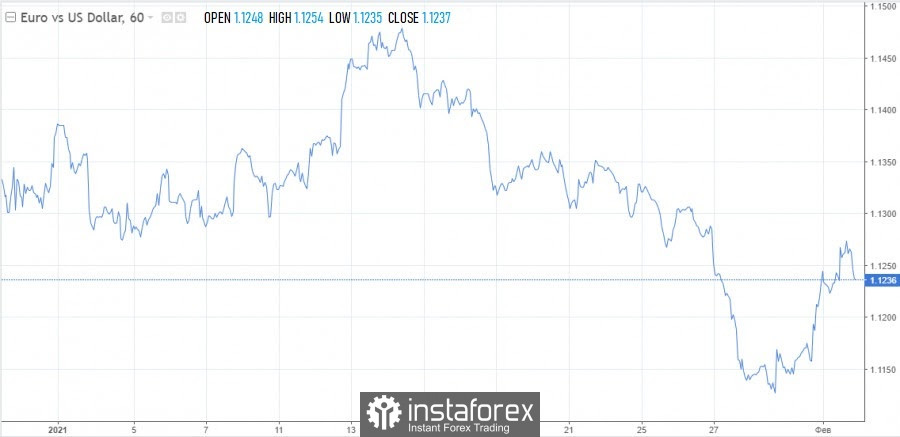
The euro started the new week with a fairly confident upward movement. The quote has settled above the 1.1200 mark, with the strengthening of the bullish trend, the EUR/USD rate may go above 1.1300. Is this a reason to buy, or do you need to cost a trading plan to sell euros if you reach the 13th figure?
The pair looked oversold after falling last week and needed correction, which, in principle, is happening now. However, everything is so confusing that it is now very difficult to predict which way the movement will go.
On the one hand, everything points to the further growth of the US currency, which will continue to squeeze the euro. The European Central Bank refuses to raise the rate, the Federal Reserve looks more and more hawkish, and this is a powerful reason to pull EUR/USD to the area of 1.1000. Last week, the quote fell due to Fed Chairman Jerome Powell's regular comments.
On the other hand, despite the difference in the monetary rates of the ECB and the Fed, the pair was still able to shoot at the very beginning of the year, leaving the usual range of 1.1220-1.1380. Bulls are not as weak as it may seem, so at any opportunity and the appearance of relevant fundamental factors, the euro will be able to move up against the dollar. However, the key here is the expression "the emergence of new fundamental factors. There are none yet, for this reason the implied growth of EUR/USD in January to at least 1.1520 did not take place.
On Thursday, the ECB will announce a decision on the key rate, no changes expected here, so investors will closely monitor the rhetoric of the ECB. The euro may strengthen at the mention of the inflation problem and the slightest expression of concern about this, as traders will consider such rhetoric as a signal for the upcoming preparation of the central bank to raise the rate.
Investors are likely to take a wait-and-see attitude before the ECB meeting and the release of NFP data on the US labor market. This means that they will not dare to take the euro quote above 1.1300.
There are no reasons for the growth of the euro, except as a corrective one. The most indicative movement for the subsequent depreciation of the exchange rate will be a confident rewriting of the daily low. As soon as this picture appears, you can open positions for short positions. The nearest target is the annual low of 1.1120, then - 1.1000. Experts also advise paying attention to the 1.1050 mark.

If the EUR/USD pair does not update the annual low and returns to growth, then a more serious corrective upward movement can be expected, and a trend change should not be ruled out.
The Fed's aggressive rate hike is beyond doubt, the central bank will act – this is a fact. Whether these actions will help to overcome inflation is another question. As soon as there are reasonable doubts about this, the dollar risks rolling back down. The euro, accordingly, should take advantage of such a moment.
The US GDP shows a record pace of recovery, while economists continue to sow pessimism in this direction. Against the background of a pandemic, which results in problems with the production and supply of goods, they can lead to a decrease in growth rates in America. The mathematical model for calculating real GDP growth from the Atlanta Federal Reserve indicates a symbolic economic recovery in the first quarter – by only 0.1%.
One by one, analytical agencies reduce annual and quarterly forecasts. JPMorgan expects growth of 1.5% in the first quarter, Bank of America – by 1.0%, and Goldman Sachs - by only 0.5%.
Inflation requires decisive action from the Fed, while economic growth is still not stable. Thus, the Fed will have to balance between inflation and recession.
BofA believes that the central bank, after a series of increases, will start stimulating the economy again in 2023. This is the only way to get away from the collapse of the economy, where financial assets are 6.3 times higher than GDP.
If the forecasts turn out to be correct, raising rates will not be enough to defeat inflation, and a slowdown in economic growth will lead to a recession, the dollar will fall.
Senior representatives of the Fed have already begun to adjust the opinions spread in the markets about a large-scale tightening of policy. The head of the Federal Reserve Bank of Kansas City, Esther George, and her colleague from San Francisco, Mary Daly, do not support the idea of a sharp rate hike. At the same time, both officials believe that tightening the policy is a necessary measure.
According to George, a well-known hawk in matters of inflation, it is better to reduce the balance quickly, thus raising the long-term rate, keeping the yield curve steep. Daly's comments are more dovish, the FOMC member noted in an interview with Reuters that the tightening should be "gradual and not destructive."
 English
English 
 Русский
Русский Bahasa Indonesia
Bahasa Indonesia Bahasa Malay
Bahasa Malay ไทย
ไทย Español
Español Deutsch
Deutsch Български
Български Français
Français Tiếng Việt
Tiếng Việt 中文
中文 বাংলা
বাংলা हिन्दी
हिन्दी Čeština
Čeština Українська
Українська Română
Română

